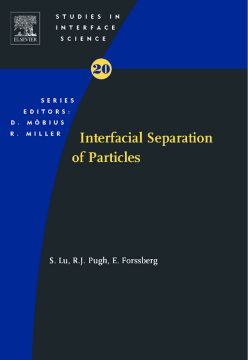
Additional Information
Book Details
Abstract
Interfacial Separation of Particles is concerned with the processing and separation of fine solid particles in liquid solutions using interfacial technology.
Interfacial separation has been finding wide application in many industrial fields, such as pigment and filler production, mineral processing, environmental protection, hydrometallurgy, bioengineering, food and beverage industry and chemical industry.
This book describes all interfacial separation techniques and discusses the general and specific fundamentals of the techniques. The book intends to promote theoretical understanding and the more promising developments of interfacial separation technology whilst broadening the reader's background knowledge of industrial suspensions.
* Is clearly written based on strong systematic science fundamentals
* Provides comprehensive coverage on particle technology, mineral processing and water treatment
* Includes practical examples from the different industrial fields
"The book is well illustrated with good diagrams and mathematical derivations. Among the topics discussed are: coagulation, flocculation, magnetic co-aggregation and combined aggregation, dispersion of particles in liquids, and gas-liquid interfacial separation. The book is a scholarly work, a combined effort of a Chinese professor and two Swedish scientists. Anyone dealing with slurries, suspensions, froth, sedimentaion, etc., will find the book of great help."
Fathi Habashi, Laval University, Canada, MINERALS ENGINEERING, 2005
"This book is a comprehensive collection of the many and varied topics in fundamental science that explain the key mineral processing operations of dispersion, flocculation, magnetic separation and flotation. This book will be of primary interest to the researcher, rather than the operator or the undergraduate student. The nature of the book is that of a comprehensive review; it is not a book where understanding is developed from first principles. Postgraduates, academics and professional researchers should find it an essential starting point for any research to do with dispersing, aggregating and separating particles in aqueous suspensions. The audience should be much wider than minerals and energy and might also include pharmacy, environmental science, chemical industry and biotechnology."
CHEMISTRY IN AUSTRALIA, 72(8)30, 2005, Len Warren FRACI C Chem
